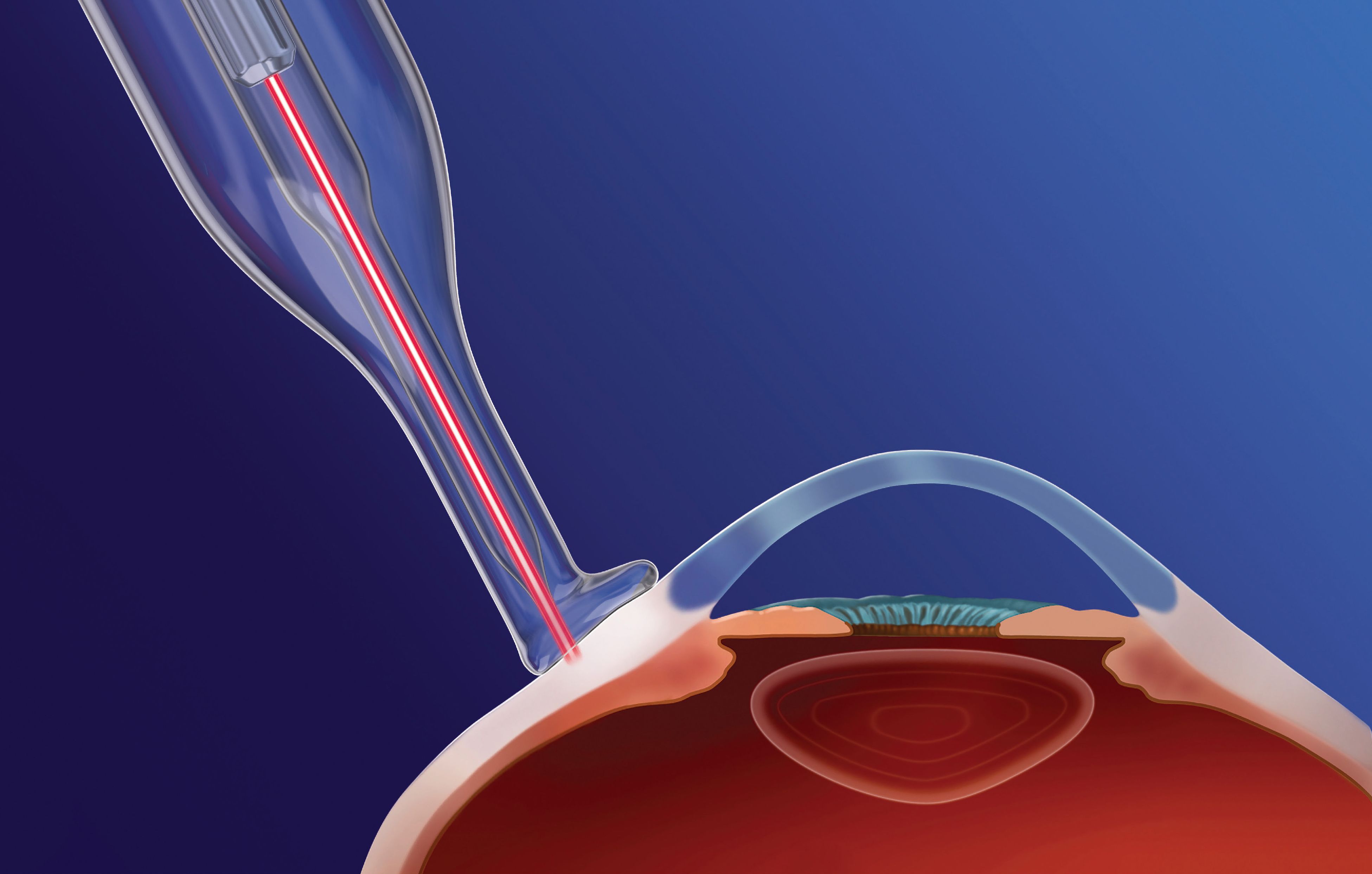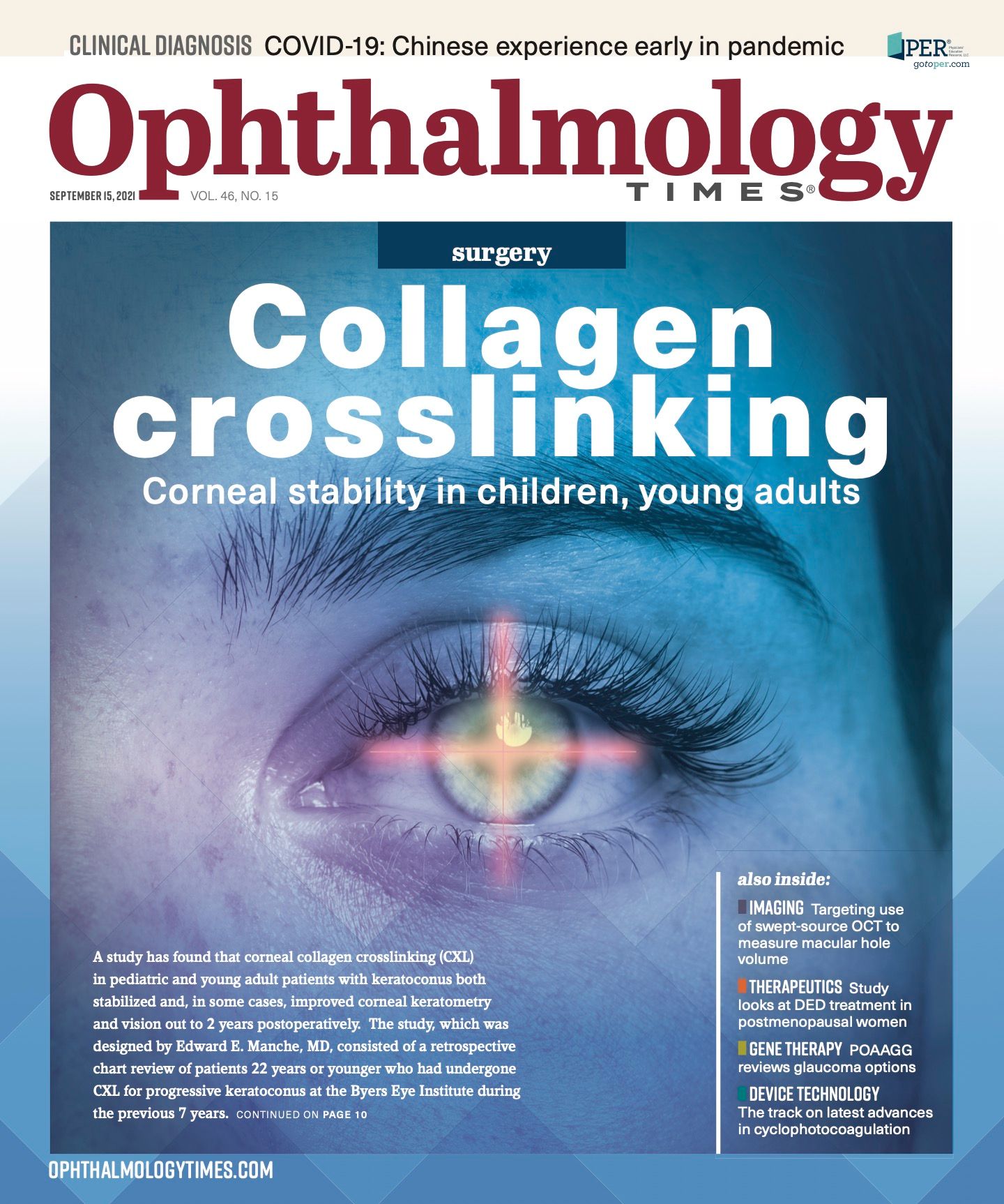Publication
Article
Digital Edition
Advances in cyclophotocoagulation: Good, better, best options outlined
Author(s):
Changes are resulting in better outcomes for patients with glaucoma.
An illustration of the placement of the MicroPulse. All images courtesy of Iridex.

Reviewed by Shan C. Lin, MD
Ophthalmologists have seen a progression in cyclophotocoagulation (CPC), with each generation of the technology becoming more physician and patient friendly.
Shan Lin, MD, a glaucoma specialist at the Glaucoma Center of San Francisco, in California, described some of the recent advances in the technology.
Transscleral cyclophotocoagulation (TCPC) was the first attempt at this technology, which has its limitations.
Related: The latest updates in cyclophotocoagulation
In some cases, the treatment did not reach the targeted tissue because the tissue was not visualized, and the pars plana often was treated instead.
In addition, there was the potential for the surrounding structures to be damaged.
Introduction of the G-Probe Illuminate Delivery Device (Iridex) helps address these problems.
Side view of the MicroPulse when in use.

This technology uses a diode laser to treat the ciliary processes through the sclera and reduces the intraocular pressure (IOP) by decreasing aqueous production.
“This latest generation of the technology allows identification of the ciliary process locations either before or at the time of treatment,” Lin said, citing a study1 reporting that the ciliary processes can range from 2.0 to 5.0 mm behind the limbus.
This is a newer technology that facilitates direct visualization of the ciliary processes as they are being treated.
Probes with different gauge sizes (18, 19, 20, and 23 gauge) are available for this intraoperative procedure.
Related: New Horizons Forum: Diagnostic advances in glaucoma
In addition, the availability of curved probes allows the treatment of more area within the same incision, Lin. said
Front view Illustration of the MicroPulse when applied.

A typical procedure, as he described, is one performed in a pseudophakic patient through a limbal approach.
“The goal is to cause shrinkage and whitening of the ciliary processes,” Lin said.
A study of endoscopic CPC that included a range of glaucoma types found that the IOP decreased from approximately 27 mm Hg preoperatively to 17 mm Hg postoperatively in the 68 study patients. The numbers of medications decreased from approximately 3 to 2.2
The complications associated with endoscopic CPC included fibrin exudate (24%), hyphema (12%), cystoid macular edema (CME) (10%), vision loss (6%) due to CME in most cases, and choroidal detachment (4%).
Related: Restoring vision in glaucoma: more than meets the eye
This is the newest of the technologies. The Cyclo G6 Glaucoma Laser with the MicroPulse P3 probe (Iridex) is a transscleral procedure designed to deliver laser energy in a pulse pattern to avoid excessive damage to the tissues.
An advantage of this new technology is that it can be performed both in an office or the operating room, but Lin said he prefers performing the procedure in the operating room for increased control and patient comfort.
There are no pops involved with the treatment, and Lin noted that the sweeping motion should avoid the 3 and 9 o’clock positions.
A study with follow-up of almost 7 years reported the efficacy and durability of this treatment.
The authors reported a 43% reduction of IOP at 78 months in 14 patients and a concomitant reduction in medications from 1.8 to 1.1. A number of treatments were needed, with an average of 3.5, to achieve IOP lowering.3
Related: The 2 faces of glaucoma
Lin also offered results of MicroPulse technology in a retrospective analysis of 54 patients with a baseline IOP of 24 mm Hg, 75% of whom had primary open-angle glaucoma.
Postoperatively, the average IOP was 17 mm Hg (P = .0002). Success in this study was defined as IOP lowering of 20% or more with or without medications, which was met in 68% of patients. Seven of the eyes required retreatment.
The potential complications of the technology include rare, unexplained visual loss; hypotony; ocular inflammation; and CME. In anatomic assessments using ultrasound biomicroscopy, there were no observable changes comparing before and after treatment.
MicroPulse works by controlling the thermal effect by “chopping” a continuous wave of the energy beam into repetitive short pulses interrupted by relaxation times, which makes for less thermal damage to the targeted area.
The technology also is thought to stimulate biologic factors, such as cytokines and growth factors, at the treatment area, Lin explained.
Related: Pivotal study data drive glaucoma patient treatment decisions
Iridex recently introduced a new Rev-2 probe with a footplate that helps with limbal alignment, improves tissue coupling for better laser delivery, makes the technique easier to perform, and potentially has fewer complications.
“Endoscopic CPC can be useful in some cases; however, there are risks associated with penetrating surgery,” Lin concluded.
---
Shan C. Lin, MD
E: sl@glaucomasf.com
This article is adapted from Lin’s presentation at the Glaucoma Research Foundation’s 25th Annual Glaucoma Symposium. Lin is a consultant to Iridex.
References
1. Agarwal P, Martin KR. Ciliary body position variability in glaucoma patients assessed by scleral transillumination. Eye (Lond). 2008;22(12):1499-1503. doi:10.1038/eye.2008.79
2. Chen J, Cohn RA, Lin SC, et al. Endoscopic photocoagulation of the ciliary body for treatment of refractory glaucomas. Am J Ophthalmol 1997;124:787-96.
3. Chew P, Aquino M. Long term efficacy of micropulse diode transscleral cyclophotocoagulation in the treatment of refractory glaucoma. EGS abstract. Prague, Czech Republic, June 19-22, 2016.

Newsletter
Don’t miss out—get Ophthalmology Times updates on the latest clinical advancements and expert interviews, straight to your inbox.




